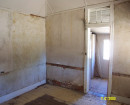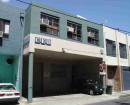MITCHELLS OR COLLIERS SHAFT
HOUSTON STREET DAYLESFORD, HEPBURN SHIRE
-
Add to tour
You must log in to do that.
-
Share
-
Shortlist place
You must log in to do that.
- Download report
Statement of Significance
This record has minimal details. Please look to the right-hand-side bar for any further details about this record.
-
-
MITCHELLS OR COLLIERS SHAFT - History
Heritage Inventory History of Site: Argus or Cornish Hill was, during the period covered by the mining surveyors monthly and quarterly reports (1859 to 1891) normally referred to as Wombat Hill South. The hill was the focus of Daylesford most sustained quartz mining effort. The first reefs on the hill were opened up in 1854-55 and the place soon became a focal point for quartz mining. At the beginning of quartz mining at Daylesford many small parties or small companies of working miners held claims on the hill. The most successful of these was a party of Cornish men (known as the Cornish Company) and it was their luck which was to have a pronounced affect on the hill's, and to an extent the town's, subsequent nomenclature. Inspired by the extraordinary and continual success of the Cornish Company, the hill witnessed an intensity of mining and technological development which was on par with some of the State's greatest quartz reefing fields, such as Bendigo, Stawell, Clunes, Maldon and Walhalla. The following is a brief overview of the hill's machinery installation (mid 1850s to 1930s) which were undertaken by the Cornish, Argus, North Cornish, Cornish Extended, and Victorian Cornish Company: 1850s First steam battery on the lower western slope of Cornish Hill was erected by Mr. C. Wilson. Operations of the first Cornish Company - an engine of 24 horse-power, and a battery of 12 heads, erected at Wombat Flat, on the west side of King-street.1864 "The Arastra" company formed with the view of operating upon the large quantity of quartz tailings accumulated in Wombat Flat, accumulated from the Cornish Co.'s engine and engines in Long and Johnson's gullies. Cornish Quartz Company - A new 16-head battery was erected 1871 A pyrites kiln is being erected at south of the Argus Co.1872 Cornish Extended Quartz Mining Co., Wombat Hill South, are erecting a 20hp engine. The Daylesford Pyrites Co. have a 6hp engine and furnace 30ft long; they also have two arastras.1874 Cornish Co.,maintains first position, have erected fourth engine - total 80hp will work up to 100hp.1879 The Argus Company are erecting machinery over main shaft. A crushing of wash is being done at Freeman's battery.1880 Cornish Quartz Mining Company intend to erect machinery on there newly acquired North Cornish claim. The intention includes; engine, 22in. cylinder and boiler.1884 North Cornish Q.M.Co. have purchased the Stone Barn plant, at Kingston,which will be at once placed on the claim. Cornish Extended Q.M.Co. Have finished the erection of their plant which consists of a new 21-inch cylinder engine, with 2 boilers ... engine house is 90ft. long by 32ft. wide, with outer connexious. 60 000 bricks and 250 load of stone were used for the foundations, boiler and chimney.1885 North Cornish Q.M.Co.purchased a 21-inch cylinder pumping engine with new boiler1886 North Cornish Q.M. Co. purchased the Freeman's crushing plant of 16 head of stamps, situated close to the North Cornish shaft ... will give the company a total of 36 head of crushing power.1886 Cornish Q.M.Co. purchased the lease and machinery of the Cornish Extended Q.M.Co., adjoining the Conish Co. South making one large lease with 7 powerful horizontal engines, varying from 11 to 29 inch cylinders, in all about 220 horse-power. There are also 3 Tangye and 28 head crushing plant.1887 Cornish and York purchased a double 10 inch cylinder portable engine. 1888 Cornish Company ...At the new shaft, Havelock company's old ground, erected the most extensive and powerful pumping and winding plant in the district ... The company has, on various pars of the mine, no less than ten engines of various descriptions, making it one of the best and most complete plants to be found out of Quartzopolis. North Cornish Q. M. Co. taking down their plant of 16 square stamps and replacing same with 20-heads of revolving stamps ... when completed their plant will be 40-heads of revolving stamps.North Cornish No. 1 ... have purchased a new 10-head battery .North Cornish Q. M. Co., have cleaned out and re-timbered the Old Fear Not shaft, fixing a 21-inch cylinder.1889 North Cornish No. 1, present erecting 10 additional stamps, total will be 20-heads.1890 North Cornish Co. - battery of 50 stamps and 14 Frue Ore Concentrators.c.1903 No. 1 North Cornish combined with the Fear Not ground, and they to crushed at the big Victorian Cornish battery.1905 Victorian Cornish Co erected three winding plants, a first-class tramway from Mitchell's shaft to the crushing plant, and effected considerable repairs and renewals to the crushing plant, which numbers 30 stampers. An additional battery of 20 stampers is in the course of erection. The South Victorian Cornish Co., erected a complete winding and crushing plant . The Daylesford Co.additional 10-head battery. 1906 Victorian Cornish G. M. Co. 50-head of stampers. There are four shafts; and twelve boilers and fourteeen engines in use. The Daylesford G. M. Co. equipped with winding, crushing and pumping machinery1930s Government battery on Jubillee Lake Road.Heritage Inventory Description
MITCHELLS OR COLLIERS SHAFT - Heritage Inventory Description
Mitchells or Colliers mine site Mullock heap - Largely intact mullock heap with one main dumping line approximately 50 metres long and 12 metres high; filled or capped shaft.Mining machinery - Set of large concrete engine and winder beds. There is a possibility that other machinery foundations may survive. The machinery foundations lie to the north of the heap obscured by high weeds. The machinery foundations were constructed in 1905 by the Victorian Cornish Company. The company also constructed a tramway from this shaft which run to Freemans battery. This battery was also upgraded in 1905. Other mining features on the hill include: Argus Company mine: Mullock heap - Located approximately 200 metres south-east of Mitchells mine. Little survives at this site except for a large mullock heap. All the machinery foundations appear to have been bulldozed.Line of shallow open cutting: Open cutting - To the west of the Argus Company's mine is a line of shallow open cutting. The workings run in a southerly direction. The shaft has been capped or filled. Bonnards or Cornish mine: Mullock heap - Located approximately 250 metres north of Mitchells mine. Little survives at this site except for large mullock heap. All the machinery foundations appear to have been bulldozed. The shaft has been capped or filled. Thomas's Look out - On the top of the heap is a small concrete pad which is all that survives of a town look-out (Thomas's) which was a popular tourist venue in the 1940s.Tramway embankment - At the base of Bonnards Company's mullock heap is a section of a raised carting tramway. This is part of the an extensive system of tramways that once existed on the hill and which conveyed ore to a crushing works (Freeman's) which was located on the northern side of the hill. The foundations for this battery were bulldozed a few years ago to make way for a school playground.Little Cornish mine: Mullock heap - Located between Bonnards and Mitchells mines, slightly to the east. Small intact mullock heap.Alluvial workings: Sluicing or surfacing - All the gullies and creeks draining from the hill have been worked for alluvial gold and most bear the deep sluicing scars of their most recent mining phase. Argus or Cornish Hill had three main periods of quartz mining. The first took place in the mid 1850s, after the first gold was discovered in Daylesford on Wombat Flat, at the western base of the hill. The diggers traced the gold from Wombat Flat up the gullies draining from the hill and found the auriferous reefs. Large scale company mining commenced on the hill in the mid-1860s with the four mines mentioned above commencing operations. There was third period of mining around the turn of the century when a new company, the Victorian Cornish, took over the whole hill. This company worked all the shafts on the hill and the ore raised was conveyed by a system of tramways to a central 50-head battery (Freeman's). Apart from the shallow line of open cutting, which may date to the first period of mining, the other features observed on the hill all represent the third (turn of the century) period of mining.
Heritage Inventory Significance: The site has:Scientific significance - because of the survival of foundations and mullock heapArchaeological potentialNetwork values - Mitchells or Colliers shaft is part of a network of sites on Cornish or Argus Hill. The quartz mining undertaken on the hill was certainly central to the development of Daylesford. The quartz mining operations on the hill are well-recorded through historical photographs and mining records and plans. The hill is viewed by a section of the community, particularly the older generations, as being symbolic of the gold mining origins of the Daylesford region. SIGNIFICANCE RANKING: Regional
Recorded by: David Bannear
Heritage Inventory Site Features: Several mine sites.
-
-
-
-
-
COURT HOUSE, FORMER POLICE QUARTERS AND LOCK-UP
 Victorian Heritage Register H1492
Victorian Heritage Register H1492 -
DAYLESFORD SCHOOL OF MINES
 Victorian Heritage Register H2434
Victorian Heritage Register H2434 -
DAYLESFORD BOTANIC GARDENS
 Victorian Heritage Register H2202
Victorian Heritage Register H2202
-
-









